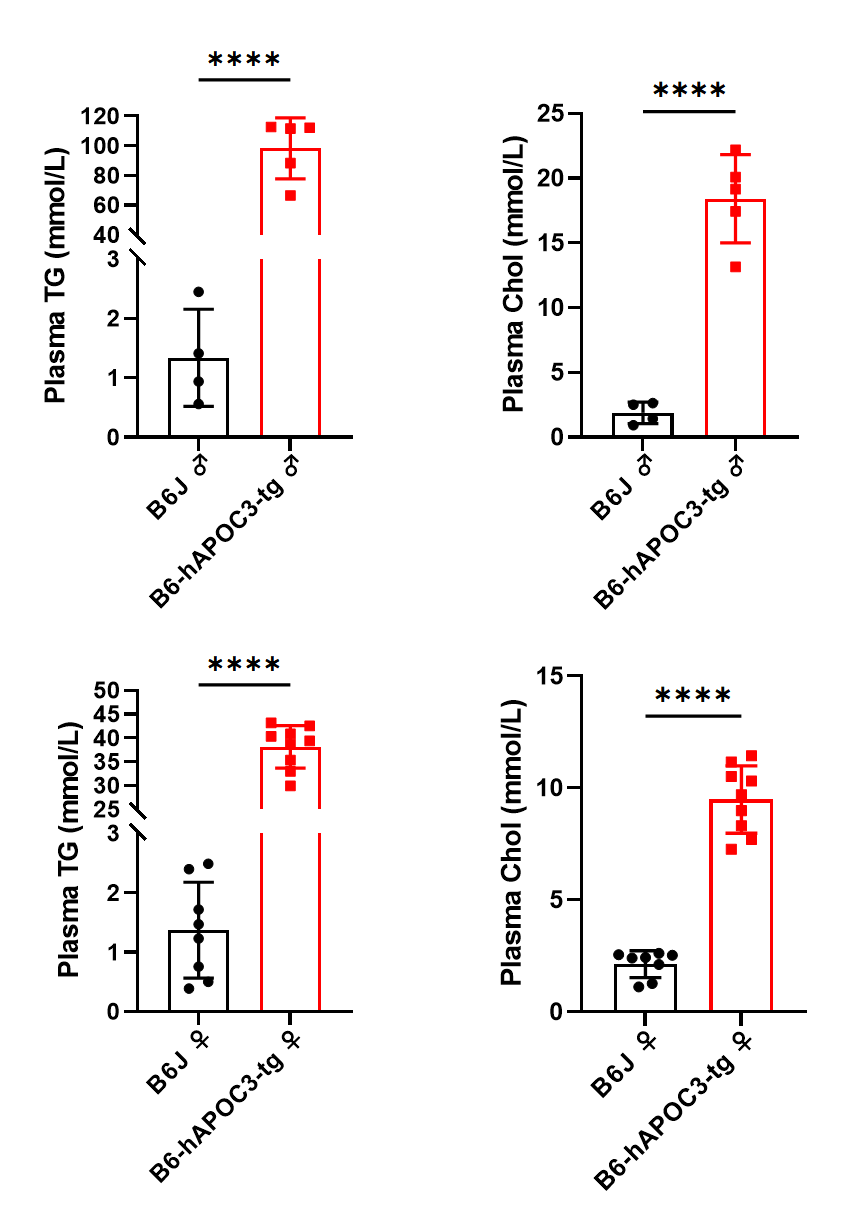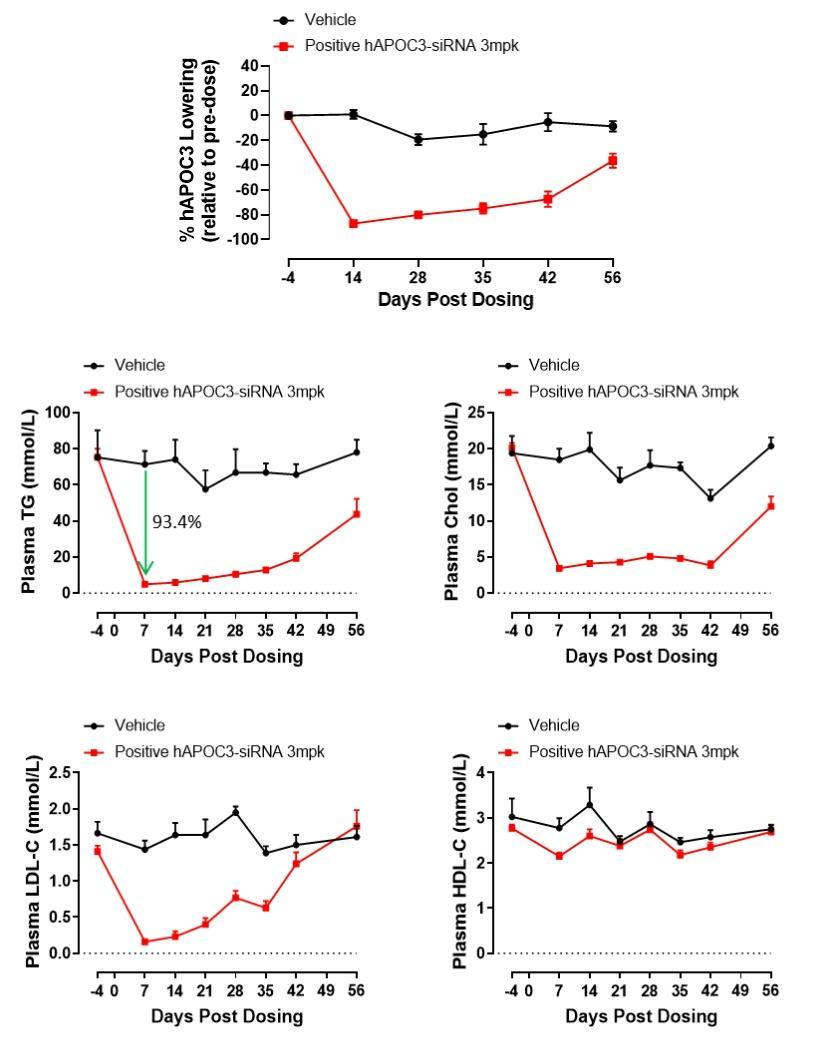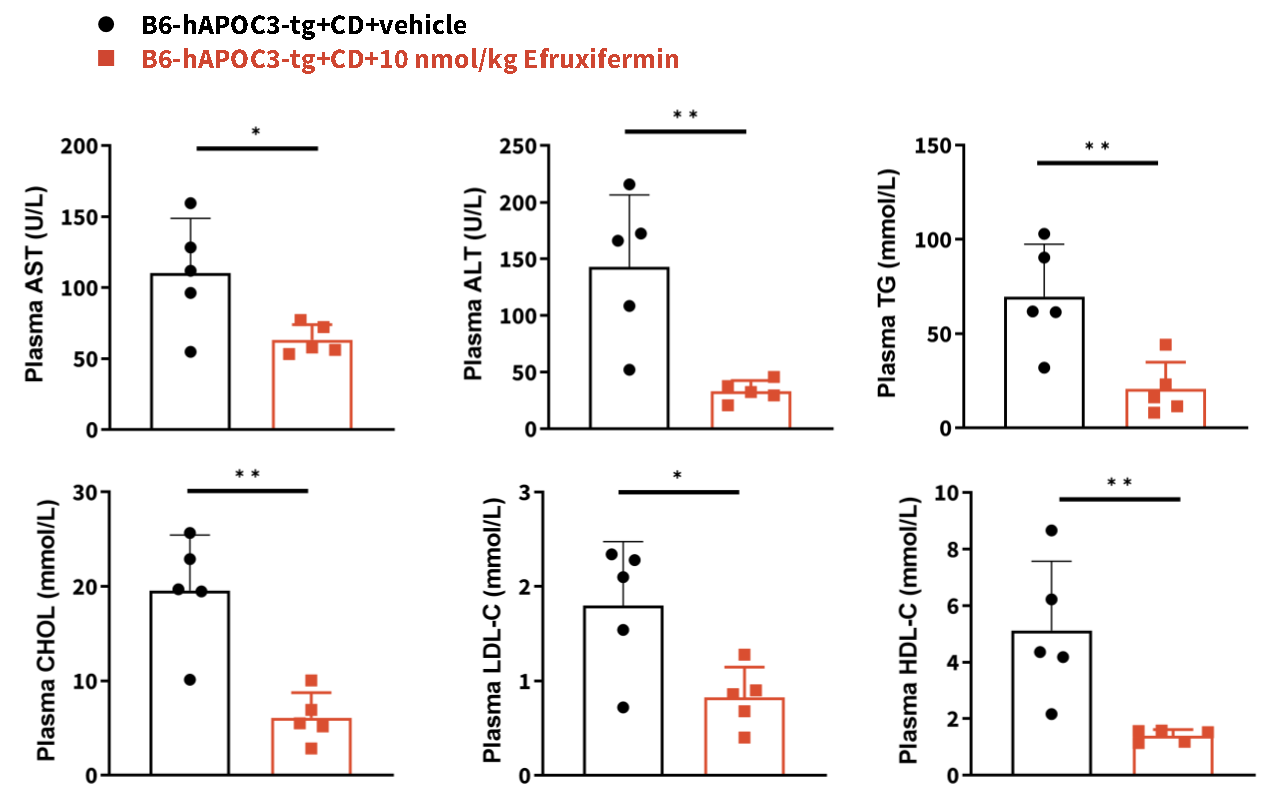APOC3 (apolipoprotein C-III) is a small protein containing 79 amino acids secreted by the liver and small intestine and a key modulator of triglyceride metabolism. APOC3 inhibits lipoprotein lipase and hepatic lipase and is thought to inhibit hepatic uptake of triglyceride-rich particles. Clinical studies have also shown that a decrease in triglyceride-rich lipoprotein (TRL) clearance is closely related to an increase in plasma APOC3 levels. Growing evidence links triglyceride-rich lipoproteins to cardiovascular disease suggesting pharmacological targeting of APOC3 to reduce expression or block its function could treat hypertriglyceridemia and reduce the risk of cardiovascular disease. B6-hAPOC3-Tg mice enable targeting of the human APOC3 in an accessible and versatile murine model.
Experimental Design and Example Data
Plasma hAPOC3 level

Figure 1. hAPOC3 protein expression in plasma. Data are presented as Mean±SD, n=6~32, ****, p<0.0001 by unpaired t test.
Plasma Triglyceride and Cholesterol levels

Fig 2. B6-hAPOC3-Tg mice express higher plasma triglyceride (TG) and cholesterol (Chol) than B6JGpt mice at 6 weeks of age under non-fasting conditions. Data are presented as Mean±SD, n=4~9, ****, p<0.0001 by unpaired t test.
Pharmacologic Reduction of Plasma Lipids

Fig 3. Plasma TG, Chol, LDL-C and hAPOC3 protein levels of B6-hAPOC3-Tg mice are dramatically decreased by a single dose of hAPOC3 siRNA. Data are presented as Mean±SEM, n=5.

Fig 4. Plasma AST (aspartate aminotransferase), ALT (alanine aminotransferase), TG and Chol were lower in 6 week old B6-hAPOC3-Tg mice following twice weekly subcutaneous injection of Efruxifermin compared with vehicle group. Data are presented as Mean±SD, n=5, *, p<0.05, **, p<0.01, by unpaired t-test.

